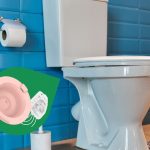There are many situations in which it is necessary to resolve the symptom of mucous prolapse or hemorrhoidal bleeding, commonly referred to as hemorrhoids, but often it is not yet time to resort to traditional surgery: a good system that allows the elimination of excess tissue it consists in the treatment through the elastic ligatures, or Hemorrhoids knot.
In a large number of cases, we are faced with an intermediate picture, in which medical therapy is no longer sufficient to keep the symptoms at bay, or it does so for a limited period of time. The most frequent situation is that in which the bleeding on defecation reappears when the medical treatment is suspended, either as haematochezia (traces of blood on the paper after defecation), or as real rectal haemorrhage (even profuse bleeding, such as to stain the cup).
Furthermore, in some cases the prolapse manifests itself with the continuous loss of secretion at the anal level, with consequent maceration of the perianal skin, which becomes fragile and irritated, with persistent itching and a sensation of “humid anus”.
These situations frequently correspond to the anatomical picture of a II-III degree mucous-haemorrhoidal prolapse: the haemorrhoidal tissue therefore tends to prolapse upon defecation, retracting spontaneously or sometimes requiring manual repositioning by the patient.
Frightened by the possibility of having to resort to surgery, this situation – sometimes very annoying but almost always painless – is endured for a long time by the patient, who often resorts to every conservative attempt before turning to a specialist.
Especially in the case of chronic itching, which is very often due to an occult mucous prolapse, the patient tends to present for the visit after months or years of symptoms, with a picture of now chronic dermatitis, already treated locally several times with little and transient reply.

Hemorrhoids knot, how is rubber band ligation of hemorrhoids done?
During a normal visit, with the help of a particular anoscope, the Hemorrhoids knot to be treated is tied to the base by a special elastic which causes its strangulation and, within a few days, necrosis and detachment. The elastic is eliminated together with the removed tissue, without the patient noticing it (If one pays attention, it can be found in the faeces during evacuation).
The healing of the mucous membrane then takes place with the formation of a small scar, which causes a slight localized “lifting” of the residual mucous-hemorrhoidal tissue, retracting it and bringing it back towards the inside of the anal canal. The scar also fixes the superficial tissue to the deep planes, limiting its further outward sliding.
The best indication consists precisely in II – III° hemorrhoidal prolapse and in mucous prolapse, one of the most frequent causes of difficulty in starting defecation, often involved in Obstructed Defecation Syndrome.
The treatment is outpatient and requires no hospital stay. Moreover, being conducted in an area with little innervation, there is no need to carry out any anaesthesia. No preparation is usually required, however a small cleansing enema 2-3 hours before treatment is recommended, to avoid excessive stool obstruction forcing you to postpone the session.
Particular attention must be paid to patients taking anticoagulant drugs (oral anticoagulants such as Coumadin – Apixaban – Rivaroxaban – Dabigatran): these must always be suspended before the procedure, initiating – if not contraindicated – appropriate therapy with low molecular weight heparins.
Similar attention should be paid to those taking antiplatelet agents (ASA – Clopidrogel – Ticlopidine): also in this case it is good to stop taking these drugs during treatment, at least 5 days before and 7 after each session. The need to establish heparin therapy will be assessed on a case-by-case basis, based on the associated pathology.

Since the aim is to cause as little discomfort as possible, a haemorrhoidal knot is tied at each session. For effective treatment, several sessions (generally 3 – 4) are required, spaced out every 2 -3 weeks: it is the time necessary for the first node to be eliminated and the healing of the treated area to begin. Only in particularly favorable cases can two areas be treated at the same time.
You can return home immediately after the operation, taking care to observe a relative rest period, avoiding abdominal physical efforts and in any case intense physical activity.
A modest bleeding may occur at the detachment of the treated node, usually 3-5 days after the positioning of the elastic, which should not be alarming. Only very rarely can the bleeding be significant, so it may be necessary to see the patient urgently and place a new elastic band or – in very exceptional cases – to control the bleeding with a stitch.
It is very important to avoid traumatizing the treated area to keep the stools soft and to avoid prolonged pushing, using fiber supplements. It is in fact frequent that the stretched elastic gives a false sensation of having to evacuate: if you are unable to expel anything, the best thing to do is not to push further and just take fibers and water. On the other hand, bulbs and suppositories are to be absolutely avoided.
Painkillers may help in the first 2-3 days, but usually it is sufficient to take a normal over-the-counter drug 1-3 times a day for a very limited period (ketoprofen – ibuprofen – paracetamol).
In very rare cases, the elastic can sometimes cause thrombosis of an adjacent Hemorrhoids knot: its function will be performed regularly, but the complication can make the course more painful than necessary, with the need to take more powerful painkillers for a few days. also by injection.
It must be taken into account that the alternative for removing the prolapsed mucous-hemorrhoidal tissue consists in surgical removal, which is certainly more painful and demanding in itself.
Elastic ligation therefore constitutes a good compromise for removing the pathological mucous-hemorrhoidal tissue without the commitment and course of a surgical operation. In well-selected cases, it is often symptomatic. If not sufficient, it absolutely does not prevent subsequent surgery.
It is possible for the prolapse to recur, starting from the untreated areas, especially if no action is taken on the causes that produce it.
For this purpose it is important to regularize the way of having a bowel movement, always avoiding prolonged thrusting and protracted sitting on the toilet for no reason, and keeping the stools soft with a constant and correct intake of water and fibres.






